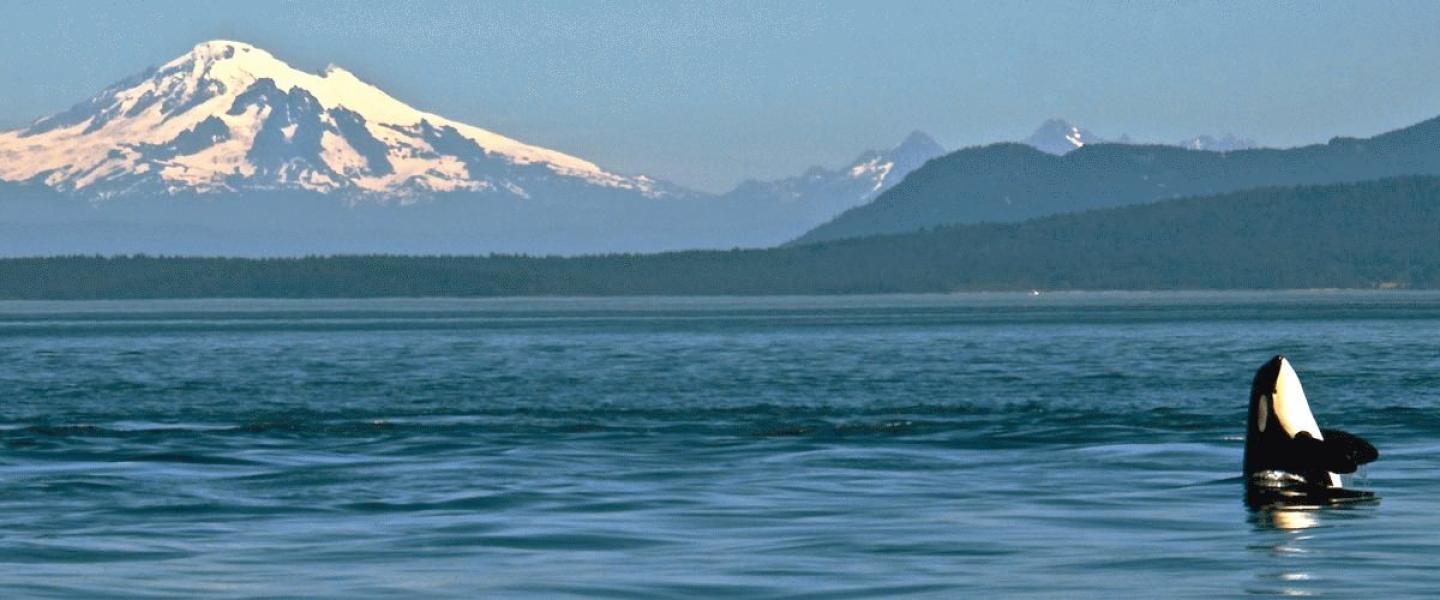
What a trip! Today the Sea Lion left the dock crewed by Captain Mike and Naturalists Mike and Alex. Despite a few clouds, our full boat of passengers was super excited to see some wildlife! Fortunately for everyone on board, a group of Transient Orcas was spotted up north in Canadian waters. Eager to see them, we sped north! Along the way we saw a few harbor seals watching our progress as well as a bald eagle flying overhead, but we only slowed down when we began looking for a Humpback whale (Big Mama) that was also reported in the area. With no luck on the Mysticete (Baleen Whales) front, we continued on to our very evident pod of Transients.
Transients, unlike their fish-eating cousins the Resident killer whales, spend their time actively hunting marine mammals including seals, sea lions, porpoises, dolphins and even large whales like Minke's and Humpbacks. Because these animals have exceptional hearing underwater, Transients need to be very sneaky and quiet while they are hunting in order to surprise their prey. To this end, pods will be made up of small numbers and they will travel very close together without vocalizing. Instead of actively using echolocation (sending out a beam of sound and listening for an echo in order to perceive their environment) like other dolphins, Transients typically use "Passive Sonar", or listening for key sounds like splashing and breathing in the water to locate their prey.
As we approached the exceptionally large group of 9 Orcas, including the T065 and T125 matrilines, just after they had eaten because they were being anything but sneaky! Everybody on the boat was beside themselves as we witnessed T127, a large male with a badly scarred dorsal fin, repeatedly slapping the water with his flukes ("tailslapping") and repeated breaches, tail lobs, spy hops, and headstands by all of the pod members. One male even alerted everyone watching to his particular level of excitement by showing off a certain piece of anatomy that is usually tucked away in order to maintain a hydrodynamic body shape. And if you didn't think Killer Whales were cool before; this 6 to 8 foot appendage is actually prehensile in order to make mating a bit easier for these animals that can weigh up to 12,000 pounds!
Aaaanyway, another notable member of this pod was a mother with a new calf, who was trying its best to mimic all the behaviors that it's mom was demonstrating including tail slapping, porpoising and breaching. It is great to see this example of how mothers and other pod members teach the new calves everything from hunting techniques to socializing behavior. In this way, each population of Orcas around the globe is unique in it's learned behavior, which is dictated by available resources and passed down over generations. In humans we call this culture, and we refer to the Orcas' unique behaviors in this way as well.
After watching this spectacle for a while longer, we decided to say goodbye to the transients and cruise along John's Pass and the Cacrus Isles where we saw more bald eagles, including one that was busy eating a fish, and lots of harbor seals who were safely hauled out on the rocks. We also got to see some Fallow Deer and Mouflan Sheep grazing on Spieden island; the feral result of a game farm that previously existed on the island.
Upon returning to Friday Harbor, we were all still giddy from seeing all the incredible wildlife. We had another Whale of a day in the Salish Sea!
Naturalist Mike J
M/V Sea Lion
San Juan Safaris